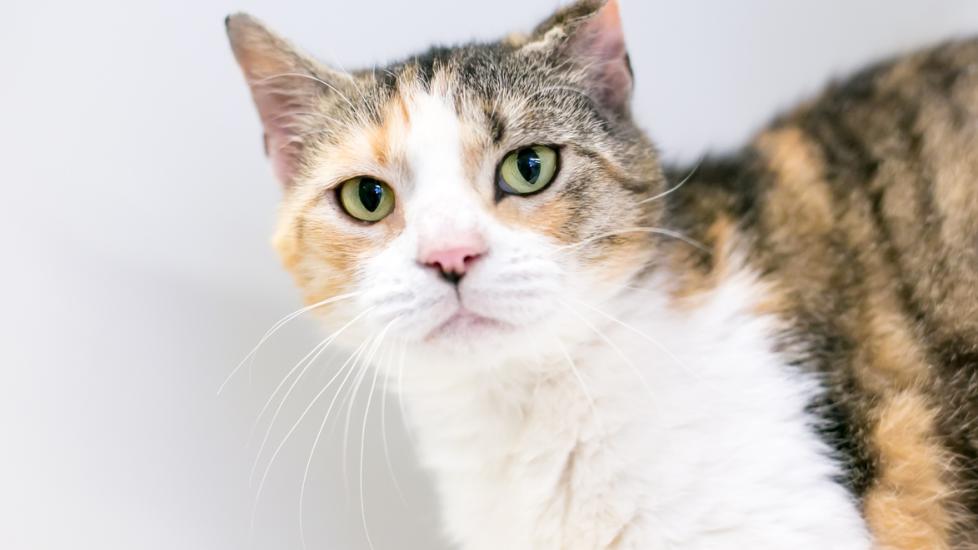Cauliflower Ear in Cats
The following may contain Chewy links. PetMD is operated by Chewy.
What Is Cauliflower Ear in Cats?
Cauliflower ear in cats is a condition that affects the ear flap, or pinna. It is a wrinkled-looking scarring of the ear flap cartilage that occurs after a hematoma, which is a blood-filled swelling caused by a broken blood vessel.
Since ear infections are a primary cause of hematomas, stray cats and cats that regularly spend time outdoors may be more at risk for ear hematomas and cauliflower ear.
Symptoms of Cauliflower Ear in Cats
If you suspect a hematoma or cauliflower ear in your cat, watch for the following signs:
-
Soft swelling of the ear flap that may feel like a water balloon
-
Narrowed ear canal opening due to swelling of the ear flap
-
Wrinkled ear flap
-
Scratching of the ears with or without odor or discharge
Causes of Cauliflower Ear in Cats
The causes of cauliflower ear in cats depend on the underlying issue, but they most commonly occur due to ear infections. Other causes may include:
How Veterinarians Diagnose Cauliflower Ear in Cats
Diagnosis of cauliflower ear is made by looking at the ear during a physical exam. If an infection is present, any ear discharge will be examined or cultured to determine the cause. An example of the discharge may be examined by placing it in immersion oil on a slide and looking microscopically to check for the presence of ear mites.
The discharge may be cultured if a bacterial infection is suspected. This is done by collecting a sample of the discharge with a special swab and sending it to a lab for testing or running a culture in the veterinary clinic. Finding the exact cause of infection ensures that the right medication is used for treatment.
Blood tests that check clotting function and platelets may be done to see if there is a bleeding disorder.
If allergies are suspected, your veterinarian may recommend a hypoallergenic diet or allergy testing.
Treatment of Cauliflower Ear in Cats
Treatment of cauliflower ear includes relieving the swelling caused by the hematoma by repeated draining or by doing surgery. Surgical options include making a small incision at each end of the swelling and placing a drain tube or cutting and opening the skin over the entire hematoma to allow it to drain.
If the hematoma is very small or the cat is not a good surgical candidate because of anesthesia concerns, repeated draining of the hematoma is a more likely treatment. Surgery would be preferred if there is concern that the ear canal could be closed off by scarring of the ear flap.
While a hematoma can resolve on its own if left untreated, the cat will be in pain as the ear heals, and the scarring and the resultant cauliflower-shaped ear may obstruct the ear canal. After the scarring has developed, it cannot be reversed.
It is also very important to treat any underlying infection or other condition that led to the hematoma in the first place. This may include oral or topical antibiotics, medications to get rid of ear mites, and pain medication.
Recovery and Management of Cauliflower Ear in Cats
It is important to prevent ear infections in your cat to decrease the chance of a hematoma forming. Preventing access to the outdoors will help avoid ear mites. There are also topical products to help prevent ear mites, such as Revolution, Revolution Plus, and Seresto.
If you notice any redness, discharge, or itchiness in your cat’s ears, contact your veterinarian so they can exam your cat. Permanent scarring of the ear flap often results from ear hematomas, but the damage can be minimized with prompt treatment. Not treating an ear hematoma can result in significant discomfort for your cat and could potentially result in scarring that closes off the ear canal and seals in any infection that may be present.
If you own or adopt a cat that has permanent scarring due to a previous ear hematoma, make sure to monitor them for any signs of an ear infection that may need treatment. Signs of an ear infection can include increased scratching of the ears or shaking the head, or redness, odor, or discharge coming from the ears.
Make sure to get your cat examined by your veterinarian if you note any of these signs. Otherwise, cats with the scarring of cauliflower ear usually do not have any long-term health issues related to the condition.
Cauliflower Ears in Cats FAQs
Do cauliflower ears in cats hurt?
The swelling and inflammation associated with cauliflower ear can be quite painful. In addition, the underlying cause may also create discomfort and should be treated to minimize pain.
Featured Image: iStock.com/Mary Swift
